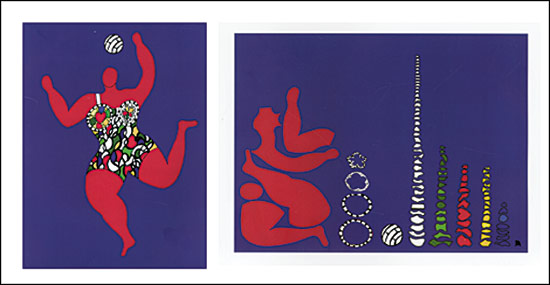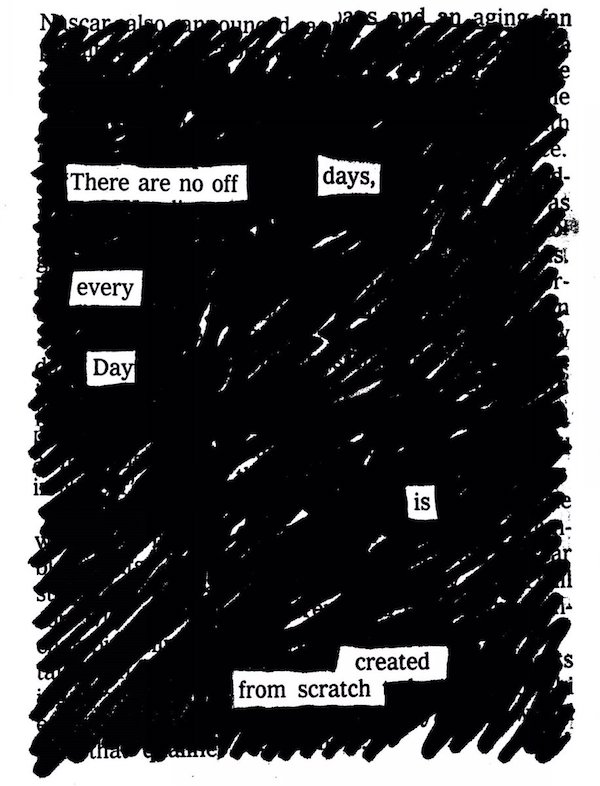Being creative is not just for “artists.”
Today, we live in an idea economy:
You need content ideas. Product ideas. Copy ideas. New ways to reach your customers. The better your ideas, the better your results.
But what do you do when you’re STUCK for ideas? And how do you come up with your BEST ideas?
The solution is counterintuitive.
Let’s start with a quick thought experiment about… birthday cards:
First of all, I hate birthday cards. What do you write on the INSIDE of the card?!
“See front!”
Yeah, Happy Birthday. I already said it lol.
Okay, I’m being a jerk. But…
Imagine you have to write a birthday card right now. Can you come up with something funny, smart, or meaningful to say?
Something that doesn’t sound like a total cliché.
Something other than “All the best.”
Because THAT’s really creative. 🙄
Ummm… NO.
“But Derek, why should I care about writing birthday cards?”
Good point.
Here’s the real reason for this little thought experiment:
It shows that being creative on the spot is tough. Most people struggle with it. However, creativity is a crucial skill.
So, if you’re ever wondering about things like “What should I write about?”, “What should I post on social media?”, “What should I put in this ad?”…
…I have some practical but counterintuitive advice for you.
Why Creativity Matters
Writing a creative birthday card is a silly task.
HOWEVER…
Creativity matters.
In fact, being creative literally pays off:
A study by Adobe showed that “creators” earn 13% more than “non-creators.” The study ALSO found that only 32% of people believe they’re living up to their creative potential.
Are you?
My point is:
Being creative is not just for “artists.” Creativity matters for EVERYONE. And it matters even more if you run an online business:
- You need to think of new ways to reach your customers.
- You need to come up with fresh content ideas.
- You need to think of a way to stand out from the competition.
- You need to come up with a persuasive sales message.
- You need new product ideas.
Yes, these are all creative tasks.
They require original ideas – YOUR IDEAS.
Because you can’t outsource your ideas.
You have to come up with your own.
But how?
The Creative Challenge: Why Is It So Hard to Be Creative?
The beautiful thing about creativity is…
It has no limits.
The big problem with creativity?
It has no limits.
You probably know this.
Especially when you work for yourself. No one’s telling you what to do.
YAY FREEDOM!
It’s awesome.
Until…
You’re staring at a blank screen.
Scratching your head.
Uh-oh.
“What do I do now?”
Let’s say you want to step up your content game (side note… you probably should):
There are THOUSANDS of topics you could write about. Or more. There is an unlimited number of topics. Even within your niche.
And THAT’s the problem:
You have the freedom to create whatever you want… Unfortunately, this freedom CRIPPLES your creativity.
It’s the paradox of choice: When we have too many options, we choose nothing.
And it gets worse…
You want to make an impact with your ideas, right?
Right. So your ideas “better be good!”
You know that people – your customers, your parents, your friends – will look at what you do. And they’ll judge your ideas.
Now, IDEALLY, you shouldn’t care what most people think. You shouldn’t let it affect your work. But the reality is:
It DOES affect your work.
In fact, a study by Teresa Amabile at Harvard showed:
When people expect to be evaluated for their work, they are less creative.
It’s a vicious circle!
You need to be creative. But there are too many options. Plus, you’re not sure your ideas are any good. You’re worried about what people will think. So you don’t create anything. The result? You never find out if you’re ideas are any good or not.
See the problem?
So the real question is:
How do you escape this vicious circle?
Well, here’s the BEST way I’ve found to be more creative:
The Best Way To Kickstart Your Creativity
Remember, when there are too many choices, we choose nothing. That’s why…
Creativity thrives under CONSTRAINTS.
So, the key to being more creative is to put ARTIFICIAL limits on your own creativity.
I’ll explain.
A study published in the journal of Psychology of Aesthetics, Creativity, and the Arts tested how constraints affect creativity:
In the experiment, people had to come up with two-line rhymes for special occasions. For example, a birthday card or a “feel better” card. The twist was that they had to do it once WITH and once WITHOUT any constraints.
What was the constraint?
Participants had to use a given word in their rhyme. For example, they had to use the word “mouse.”
The results show how the right constraint unlocks creative power. Just compare a typical “feel better”-rhyme WITHOUT constraints…
I will write you a letter
To help you feel better.
…to a rhyme WITH the constraint:
I hope that you soon feel better
Than a mouse with 1,000 lbs. of cheddar.
Way more creative, right?
That’s because constraints FORCE you to get creative.
With the given word, people were forced to think outside the box of typical “feel better” cards. Instead, they had to think INSIDE the box of “mouse”-related rhymes.
Here’s what’s interesting, too:
When the participants saw the constrained condition first, they came up with more creative rhymes when they had no constraints the second time around, too.
In other words, the initial constraint helped to KICKSTART their creativity.
But wait a moment…
People were ASSIGNED a word. That’s pretty random and not realistic at all. That’s why the study included a second experiment:
This time, people had to pick a random word themselves first. Only then were they asked to use that word in their rhymes.
And the results held up! People still came up with more creative rhymes when they used their own words.
This proves that even self-imposed constraints will boost your creativity.
Once I realized this, I had a real Aha-Moment…
And I saw how the most creative people around me use this trick all the time.
The Power Of Creative Constraints
For example…
I have a friend who’s a great musician. But he was having trouble finishing a whole album. In his own words:
I just can’t seem to finish any whole projects. I sort of run out of steam after 5 songs lol.
But then, he introduced some artificial constraints…
He decided to use only ONE microphone from the 1950s to record the whole album. And that’s how he finally got it done – pretty cool!
(You can listen to that music here.)
This is just one example to illustrate the power of creative constraints. There’s actually a lot of research to support this whole idea:
- This study shows how introducing constraints into the problem-solving process will help you see the big picture… and come up with creative solutions.
- Other research suggests that constraints are useful for R&D teams.
- A Danish study compared artificial constraints in art vs. engineering. Their conclusion? Self-set constraints seem to play a crucial role in both domains.
So, self-imposed constraints can work in almost any setting. Some of the smartest business leaders know this, too…
For example, former Yahoo! CEO Marissa Mayer wrote back in 2006:
Creativity thrives best when constrained.
Now, the question is, what does this mean for you?
How can you use this insight to boost your own creativity?
6 Ways to Be More Creative By Thinking “Inside the Box”
I want to share 6 specific ways you can self-impose creative constraints.
Paradoxically, you’ll be MORE creative by thinking “inside the box.”
Check it out…
#1 – Pick Your Battle (aka “Black-Boxing”)
Creative tasks are often overwhelming because when you start… you don’t know what the end product will look like.
That’s just how it is. The outcome is uncertain because there are too many moving parts. But it’s unsettling – the uncertainty can keep you from starting. That’s why you need to pick your battle…
What it really means is:
Start with the easiest part!
Limit the problem to what you can figure out right now. And put everything else in a “black box.” Just forget about it. You can worry about it later.
I often do this. For example:
When I write a sales page, I start with what I know. Usually, the “how it works” product section. And I “black-box” everything else.
This way I don’t have to worry about my headline. Or a good story. I know I’ll figure it out later.
#2 – The One-In, One-Out Rule
Ever been stuck in “Analysis Paralysis?”
I’m sure you know what I mean:
Instead of making a decision and moving forward, you get stuck in endless research. If this sounds familiar, there’s one simple, self-imposed limitation you can use:
The 1-in, 1-out rule.
I first heard about this from The Hustle co-founder, Sam Parr. When you’re creating content, turn each piece of “input” into one piece of “output.”
Whenever you read, hear, or see something that’s relevant to your business… Write about it. Don’t do any additional research. Just 1 idea in. 1 article out. So for example, after you read this article, take one idea and write about it.
But it doesn’t just apply to writing.
It’s really just about quick execution and iteration.
Look, there are no truly “original” ideas. All ideas are built on each other.
Here’s an example:
The artist Ursus Wehrli takes famous pieces of art… and “cleans them up” by reorganizing the shapes and objects.

Ursus Wehrli Cleans Up art
So, for each piece of his own work, he starts with one other piece of art: 1 in, 1 out.
Limit yourself to this rule and see what happens.
#3 – The 30 Minute Sprint
A self-imposed time constraint works wonders.
So, if you’re in a creative rut… Put the pressure on.
Set a timer for 30 minutes and see what you can come up with.
This is part of my routine whenever I need to get hyper-focused.
Try it.
#4 – 100 Words or Less
This is best suited for writers. But you can apply it to other fields, too.
Here’s how it works:
Rather than writing without a limit…
…constrain yourself to 100 words.
Or 300 words. The actual number doesn’t matter. Just pick a length that feels way too short for what you’re trying to do.
I like this because when you write, you need to ELIMINATE FLUFF.
Which is funny, because it’s sort of the opposite of what you’re taught in school. There, you need to write “at least” 500 words. Like somehow, more words will make your writing better.
Well, it doesn’t.
Look at Seth Godin. Some of his blog entries are just a couple of lines. Others are longer essays. The length doesn’t matter for impact. The message does.
So how about you limit yourself to 300 words. 200 words. 100 words. Or less. And write something worth reading that’s SHORT.
#5 – “One Hand Tied Behind Your Back”
I often start my ideas on paper.
Expensive Japanese notebooks, to be exact. The paper is so smooth you want to rub your face against it. Weird, I know. But I digress…
The point is:
When you remove some of the convenient TOOLS you use everyday… you’re forced to get creative.
Cubist painter Georges Braque (1947) said:
Limited means beget new forms, invite creation, make the style.
Here are some cool examples…
Screenwriter David Franklin imposes 5 rules in his film production classes. He calls it the Franklin Five:
1. No guns; 2. No Suicides; 3. No drug deals; 4. No prostitution; 5. No Clichés.
Or take Austin Kleon. He’s become known for his “blackout poetry:”
Instead of starting with a blank sheet… Austin starts with a page full of text, like a newspaper article.

Austin Kleon’s Blackout Poetry
Then, he BLACKS OUT everything he doesn’t want. This, of course, means that he’s limited to the words that are already on the page.
Now, there are quite a few more examples of this type of “constrained writing:”
For example, there’s a French group of authors who’ve experimented with leaving out certain letters or starting every sentence with a given letter.
But how can you use this to be more creative if you’re not a writer per se?
The way I like to think about all of these techniques is creating with “one hand tied behind your back.”
So, think about your process. Then, ask yourself: How can you make it a little bit harder for yourself?
This might just lead to the creative spark you need.
And who knows! Just like Austin Kleon’s became known for his blackout poetry… You may discover “your thing” this way, too.
#6 – Start With Structure
Most people start with “content.”
The “what…”
- “What should I write about?”
- “What kind of product should I sell?”
- “What should I put on my website?”
Then they start creating.
But with this approach, you’ll often get stuck before you even get started. If you don’t have an idea on the spot, you’re toast.
But what if you put the “what” aside for a moment?
What if instead, you start with the STRUCTURE?
This may prove to be a much more fruitful approach.
I’ll explain.
In music and poetry, there are many formal structures. For example:
- A Haiku is a Japanese poem that has exactly 3 lines with 17 syllables, written in a 5/7/5 syllable count.
- A Sonata is a musical composition with 3 sections that follow a given chord progression.
So, before a composer writes a single note, he knows the structure his composition needs to fit into. This makes the creative process so much easier!
Let’s say you need to create content for your blog:
You can either hurt your brain thinking about blog post topics. OR you can pick a content format or structure.
Here are some ideas:
- Use the Q&A format.
- “5 Questions About Living in a Tiny House”
- Write a “Do’s and Don’ts” article.
- “The Do’s and Don’ts of Investing in Real Estate”
- Use the whole alphabet with the “A-Z” structure.
- “The A-Z of Boxing”
Choosing the structure FIRST should get you started.
Now…
Do you see how the idea of creative constraints works?
Limit Yourself… And Set Your Creativity Free!
The bottom line is:
Creativity is crucial to your success.
And creative limitation is one of the best ways to be more creative.
So, next time you get stuck for ideas, impose some creative constraints on yourself!
Now, I’m curious:
Did you learn something about creativity?
Any plans on how you can “think inside the box”?
I’d love to hear it in the comments.








Your best post to date Derek. Seriously, it really impacted me a lot. So much so that I wrote an entire blog about it – and I do reference some of your material (I can send a link if you are interested…). My niche centers around helping guitar players be better at what they do. But this whole “creative block” thing is something I hear about a lot – and not just from guitarists from many other fellow musicians, recording engineers, producers, writers, etc.
The Creative Constraint you talk about is something that I guess I always knew about (and would even teach), but never articulated in the way that you did. This really put it all together for me.
I’m hoping my post will help the artists that I reach out to. But I owe thanks to your post. Great stuff!
Thank you!
I agree with everything that’s been said…”constrains” do act as a powerful trigger to being immensely more creative and fetch the desired outcomes and results in the end.
Hey Derek! You had me at creativity. I had to hop over here to check it out. This was a fantastic read. Putting constraints on creativity seems counter productive, but in reading this I was blown away. So many aha moments for me. Thanks for sharing the tips too!
Love this article. I’ve been doing “top 10 lists” lately as a tip I got from James Altucher. Works great but I’m going to try some of these ideas too. Creative constraints are very effective.
Derek, thanks for sharing these insights. Creativity is a key way for each of us to differentiate ourselves. I’ve been studying and writing about creativity and creative problem-solving for over 20 years. One of the most reliable ways I’ve discovered to generate valuable ideas is through brainstorming tools. Think of them like a catalyst, providing stimuli to jump-start your thinking in fresh directions. These tools include hand-held tools (card decks, mainly) and smartphone based. You can read my reviews of them on my personal blog, here: http://chuckfrey.com.
So Ironic that I read this… because I put together a style course on creating a Capsule Collection Wardrobe to help women look and feel amazing in her clothes (bonus: get dressed in 5 minutes or less) every day.
I took on a few students for my Beta…and they thought it would be impossible to dress with 20 pieces of apparel per month. Low and behold…they feel more creative now with their Capsule Collection wardrobe than they ever have before with a closet full of clothes!
Constraints help with creativity…even when it comes to getting dressed!
Thank you for sharing!
-Ada
I actually seen the same and I wonder to know that there is a scientific research behind it.
Thanks to provide
To answer your CTA – Yes indeed, I have learned something from this article. And I thank you!
I am creative from the moment I wake up and decide what to wear to writing my next article. I do find myself so much out of the box that it eats away so much of my time. I like the idea of having constraints from all that you have illustrated here.
My only experience with it is that whenever I have to produce a product, I hire a coach. He or she will keep me in the box to meet time limits. Do-overs, etc. It is the only way I can get it done. Now what I’ve just learned (duh) is to use this example and apply it to my every day tasks.
You have really gotten through this creative head of mine and I thank you so much.
-Donna